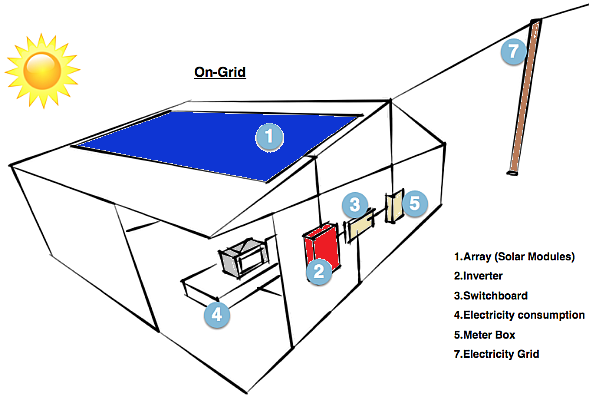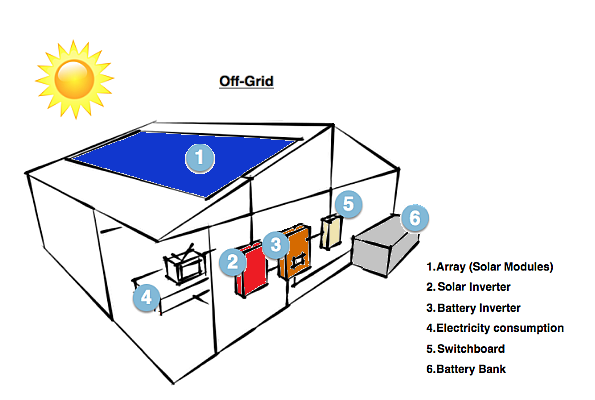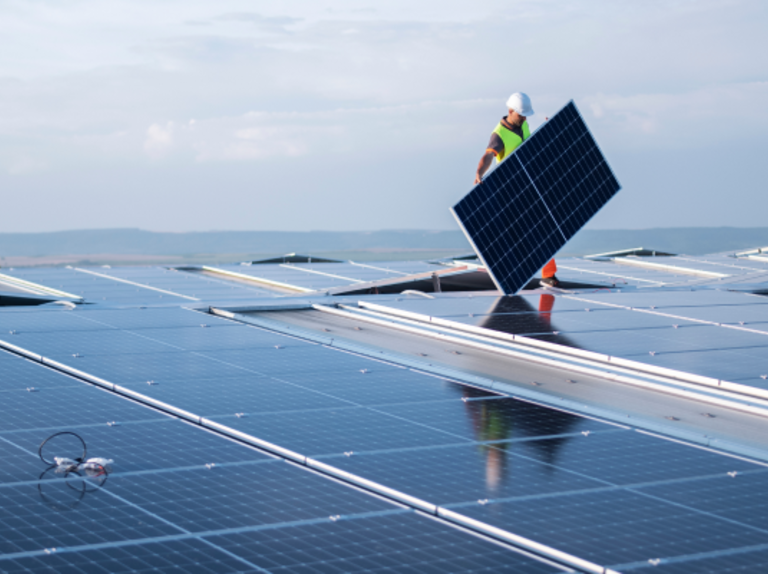
Настоящее время, поскольку предприятия и сообщества по всему миру добиваются прогресса в области устойчивой энергетики, Системы солнечных батарей стали одним из самых быстрорастущих источников энергии в мире..
Хранение энергии стало важным. Коммерческие системы хранения энергии могут более эффективно и надежно использовать возобновляемую энергию., после всего, Бытовые пользователи могут использовать и хранить только информацию о потреблении электроэнергии своим домохозяйством..
В этой статье, мы ответим на некоторые распространенные вопросы о коммерческих системах хранения аккумуляторов., который поможет вам разобраться и выбрать коммерческие системы хранения энергии.
Понимание важной роли коммерческих аккумуляторных систем хранения энергии в переходе к устойчивой энергетике открывает новую перспективу и рабочее пространство для современных решений по хранению энергии с точки зрения рынка..
Эта статья очень подходит для владельцев бизнеса, профессионалы отрасли, или кто-то, кто интересуется будущим промышленных и коммерческих систем хранения солнечной энергии.
Что такое промышленные и коммерческие системы хранения солнечной энергии??
Системы хранения солнечной энергии — это чистая технология, направленная на сохранение электрической энергии для использования..
Он принимает передовую технологию батареи, устанавливаются в помещениях предприятий и применяются в промышленности и торговле.
Как опора энергетических объектов предприятия, он может хранить возобновляемую энергию из сети в часы пик или от оборудования, такого как солнечные панели, когда давление нагрузки низкое.. Затем, распределение мощности осуществляется при высоком давлении нагрузки.
Не только это, его также можно использовать в качестве резервного источника питания во время перебоев в подаче электроэнергии., и даже обратная связь с сеткой в некоторых случаях.
И путем создания эксклюзивных корпоративных программ, система может быть спроектирована на основе различных факторов, таких как цены на энергию, время пикового спроса, и конкретных энергетических потребностей предприятия для оптимизации энергопотребления.
Коммерческие системы хранения солнечной энергии предназначены для предприятий, позволяющих контролировать использование энергии., повысить эффективность, и поддерживать усилия по устойчивому развитию.
Эта система хранения энергии имеет множество преимуществ в гибкой регулировке электрической энергии и хранении энергии., которые могут позволить предприятиям работать эффективно и устойчиво, одновременно снижая затраты на потребление энергии..
Методы хранения солнечной энергии в основном делятся на две категории.: централизованный и распределенный.
Централизованное хранение энергии подразумевает размещение нескольких устройств хранения энергии в централизованном хранилище энергии., которые соединены через систему, образуя крупномасштабную систему хранения солнечной энергии..
Распределенное хранилище энергии, также известное как хранилище энергии на стороне пользователя, подчеркивает сценарии использования накопителей энергии.
Это маломасштабная энергетическая технология, применяемая в пользовательских или ресурсоемких областях., направлен на рассредоточение оборудования по хранению энергии в различных местах для повышения стабильности и надежности электросети..
В дополнение к хранению энергии на стороне пользователя, существует также хорошо известное сетевое хранилище энергии..
Владельцы промышленных и коммерческих предприятий, а также бытовые потребители составляют основную группу пользователей накопителей энергии.. Основная цель этой группы, использующей накопители энергии, — предоставить планы резервного копирования в чрезвычайных ситуациях., управлять ценами на электроэнергию, и контролировать затраты на мощность. Промышленные и коммерческие хранилища энергии являются типичными проявлениями систем хранения энергии на стороне пользователя..
В отличие, Системы хранения энергии со стороны мощности ориентированы на потребление возобновляемой энергии, стабильность выхода, и регулирование нагрузки. Накопление энергии на стороне сети в основном сосредоточено на снижении пиковых нагрузок., устранение перегруженности линий, и другие аспекты.
Как работает коммерческая система хранения аккумуляторов?
Принцип работы коммерческих систем хранения аккумуляторов заключается в поглощении возобновляемой энергии., преобразовывать и хранить ее в электрическую энергию, а затем предоставить эту энергию, когда это необходимо.
Компоненты систем хранения энергии обычно состоят из батарей., инверторы для хранения энергии (ПКС), системы управления батареями (БМС), системы энергоменеджмента (EMS), а также некоторые системы защиты цепей, системы мониторинга, средства пожарной безопасности, и т. д..

Две основные архитектуры промышленных и коммерческих систем хранения энергии
Система связи переменного тока с PCS
Конфигурация системы связи аналогична конфигурации накопителей энергии., но с меньшими количествами и более простыми системными функциями.
Параллельное соединение фотоэлектрических систем и систем хранения энергии обеспечивает высокую гибкость и адаптируемость продуктов для существующих промышленных и коммерческих рынков фотоэлектрических систем хранения энергии..
Система связи постоянного тока
Система связи постоянного тока объединяет фотоэлектрический инвертор и двунаправленный преобразователь в интегрированную машину для хранения фотоэлектрической энергии..
По сравнению с системами связи переменного тока, Системы связи постоянного тока обладают преимуществами высокой интеграции и низкой себестоимости..
Интегрированная фотоэлектрическая система хранения энергии мощностью 50–100 кВт постепенно стала лучшим выбором для малых и средних промышленных и коммерческих систем хранения энергии..
Этот процесс включает в себя несколько процессов:
Конверсия:
Первым шагом является получение энергии, которая преобразуется в электричество. (например, от систем возобновляемой энергии, таких как солнечные панели) и хранить его в батареях системы.
Энергия сохраняется в виде химической энергии внутри батареи и при необходимости преобразуется обратно в электрическую энергию..
Хранилище:
После зарядки, энергия будет храниться до тех пор, пока она не понадобится. В этих системах используются технологии, которые позволяют сохранять энергию в течение длительного времени и могут быть использованы в любое время., что делает их очень гибкими и удобными.
Увольнять:
Когда нужна энергия (например, во время пикового потребления электроэнергии, Отключения питания, или экстремальные погодные условия), система будет разряжать электрическую энергию и доставлять ее в нагрузку.
Регулирование:
Большинство промышленных и коммерческих систем хранения энергии также имеют компоненты управления, которые могут разрабатывать шаблоны на основе цен на энергию и времени использования..
Учет энергетических потребностей предприятий и различных факторов для определения сроков и продолжительности зарядки и разрядки..
Каковы преимущества использования промышленных и коммерческих систем хранения солнечной энергии??
Солнечная энергия и хранение энергии создали друг для друга бизнес-возможности.. Солнечная энергия – отличный новый источник энергии, и у него также будет больше связей с водородной энергетикой при поддержке будущего технологического развития..
Хранение энергии может сгладить цены на электроэнергию, управлять и регулировать потребление электроэнергии, снизить экологические риски, и предоставить возможности поддержки резервного копирования.
Экономия затрат на электроэнергию
Это основная причина и привлекательность для предприятий выбора промышленных и коммерческих систем хранения энергии..
Этот подход, также известное как переключение нагрузки или сглаживание пиков, может значительно снизить затраты компании на электроэнергию за счет зарядки в часы непиковой нагрузки и разрядки в часы пик..
Поддержка возобновляемых источников энергии
Они могут хранить энергию, вырабатываемую солнечной или ветровой энергией, для использования в периоды недостаточного производства или пикового потребления электроэнергии..
Путем оптимизации энергопотребления и эффективного использования возобновляемых источников энергии, Коммерческие системы хранения аккумуляторов могут помочь предприятиям сократить выбросы углекислого газа и внести свой вклад в достижение целей устойчивого развития..
Гибкость и надежность
Коммерческие аккумуляторные системы хранения могут обеспечить резервное питание, когда питание невозможно получить из сети., обеспечение работы оборудования.
Это крайне важно для предприятий, которые полагаются на непрерывное электроснабжение., например, объекты холодовой цепи и больницы.
Электросетевые услуги
В подключенных к сети или смешанных сетевых системах, предприятия с коммерческими и промышленными аккумуляторными системами хранения энергии могут реагировать на энергетические планы или предоставлять другие электросетевые услуги., которые могут обеспечить дополнительную прибыль и более быструю окупаемость инвестиционных затрат.
Понимание различий: Типы систем хранения солнечной энергии
Промышленные и коммерческие системы хранения энергии разработаны специально для предприятий., отрасли промышленности, и коммерческие объекты.
Емкость этих систем ниже, чем у сетевых систем хранения энергии., но выше, чем у жилых систем.
GYCXПромышленное и коммерческое решение для хранения энергии обеспечит профессиональные индивидуальные функции., такие как управление и регулирование требований по зарядке и разрядке, передача нагрузки, и функции переключения резервного питания.
Мы верим в оптимизацию использования энергии, сокращение необходимых затрат, и повышение энергетической надежности в промышленных и коммерческих средах, и стремимся предоставить клиентам удовлетворительные сервисные решения.
И им требуются специальные лицензии и сертификаты для промышленных и коммерческих установок., которые могут быть непригодны или не одобрены для использования в жилых районах из-за требований местной политики.. Однако, наша универсальная служба спланирует все за вас. Свяжитесь с нами сейчас, и любые проблемы будут легко решены.
Вы можете выбрать подходящие для вас настройки системы на основе приведенного выше анализа..
Сетевая система

Солнечные системы, подключенные к сети или подключенные к сети, в настоящее время являются наиболее распространенными и широко используемыми системами на рынке в домашних хозяйствах и на предприятиях..
Не требует батарей, использует солнечный инвертор, и подключен к общественной электросети.
Любая избыточная солнечная энергия, которую вы генерируете, будет выведена в сеть., обычно получают сетку в виде тарифного субсидирования (Соответствовать) или кредит на экспортируемую энергию.
По соображениям безопасности, Солнечная система, подключенная к сети, не может работать или генерировать электроэнергию во время перебоев в подаче электроэнергии. Это связано с тем, что отключения электроэнергии обычно вызваны повреждением электросети..
Если солнечные инверторы отдают энергию в проблемную электросеть, это может представлять угрозу безопасности ремонтников..
Гибридная солнечная система с аккумуляторным накопителем энергии (также известен как «гибридная сетка») может автоматически изолироваться от электросети (обычно называют островом) и обеспечивать электроэнергией нагрузку на основе собственного накопителя энергии во время перебоев в подаче электроэнергии.
Преимущества подключения к сети
Если вы хотите компенсировать некоторые счета за электроэнергию и сэкономить немного денег, Солнечная энергия, подключенная к сети, является лучшим выбором.
Большинство систем, подключенных к сети, окупят затраты в течение 5-10 годы.
Поскольку гарантийный срок солнечных панелей в основном 10-25 годы, Системы, подключенные к сети, являются отличным выбором, чтобы приносить прибыль пользователям на протяжении всего срока службы солнечных панелей..
Система подключенной к сети будет меньше - вам не нужно регулярно соответствовать 100% электроэнергии, потребляемой производственным оборудованием.
Электроэнергия, подключенная к сети, может обеспечить дополнительную электроэнергию за пределами производственного диапазона.. Его требования ниже, чем у автономной среды., как в автономной среде, вы несете полную ответственность за 100% ваших энергетических потребностей.
Недостатки подключения к сети
Основным недостатком систем, подключенных к сети, является их восприимчивость к перебоям в подаче электроэнергии..
Система, подключенная к сети, подключена к общественной электросети.. В случае отключения электроэнергии, персоналу необходимо устранить неполадки и решить проблему.
Но если подключенная солнечная система все еще включена и подает электроэнергию в сеть, есть угроза безопасности, когда они его ремонтируют. Таким образом, подключенная к сети солнечная система будет отключена во время перебоев в подаче электроэнергии., чтобы коммунальные работники могли работать безопасно.
Автономная система сетки

Автономные солнечные системы не подключены к общественной сети., поэтому требуется аккумуляторная батарея. Он должен вырабатывать достаточно электроэнергии в течение всего года., а также подходящая емкость аккумулятора для удовлетворения потребностей в хранении энергии, принимая во внимание как окружающую среду, так и погоду, например, зимой, когда
время освещения становится короче. Стоимость аккумуляторного оборудования и автономных инверторов означает, что автономные системы намного дороже., поэтому рыночный спрос обычно находится в отдаленных районах, вдали от общественной сети..
Хорошей новостью является то, что стоимость аккумуляторов быстро снижается., поэтому рынок автономных систем солнечных батарей также расширяется..
Преимущества автономных солнечных систем
Его главная изюминка – полное отключение от электросети., пока есть солнечный свет, оно может быть самодостаточным.
В некоторых случаях, стоимость земли, необходимая для размещения оборудования, может быть компенсирована и заменена более высокой стоимостью автономной солнечной энергии из-за ее низкой стоимости..
Недостатки автономных солнечных систем
Спрос на аккумуляторные батареи в автономных системах хранения энергии приводит к увеличению затрат.. Но оно по-прежнему имеет преимущества перед другими решениями для удаленного электропитания., например, запуск новых государственных сетей или использование дизельных генераторов..
Гибридная система

Он объединяет солнечную энергию и аккумуляторную батарею в одно целое., с несколькими различными конфигурациями. Система, которая уже подключена к сети (сеть подключена) также можно начать использовать аккумуляторную накопитель энергии.
Это означает, что сгенерированная солнечная энергия также может храниться днем и использовать ночью.
В это время, Общественная энергетическая сетка будет служить резервной силой.
Гибридная система также может заряжать батареи в пиковые часы пиковой силы.
Почему нам нужно развертывать промышленные и коммерческие системы хранения энергии
Как упоминалось ранее, Ключ ко всей системы - это «Солнечная энергия+хранение энергии».
С точки зрения хранения энергии, Промышленное и коммерческое хранилище энергии может удовлетворить потребности предприятий по энергетике.
Регулируя и оптимизируя цены на электроэнергию пика и долины и затраты на электроэнергию.
Обеспечение резервной мощности в аварийных ситуациях и укрепление интеграции чистой энергии имеют решающее значение.
Комбинация фотоэлектрической системы с промышленным и коммерческим хранением энергии, Особенно с солнечной фотоэлектрической выработкой электроэнергии, может значительно повысить эффективность использования возобновляемых источников энергии.
Для коммерческих и крупных промышленных пользователей, установка солнечных фотоэлектрических систем с компонентами хранения энергии может обеспечить цикл собственного потребления с полным внутренним снабжением..
В случае отключения электроэнергии или аварийных ситуаций, например суровая погода или особые события, есть возможность быстрого переключения на резервный источник питания, обеспечение мощности электропитания оборудования и систем, с практически бесперебойной технической поддержкой.
С точки зрения возобновляемой энергетики, «Солнечная энергия» не только экологически, но и ответственность перед Землей.
В эту эпоху 5G, Концепции «мира» и «страны» не могут сравниться с концепцией «Глобальной деревни».
В эпоху экономической глобализации, речь идет не только об охране окружающей среды, но и о развитии, и что еще более важно, о распределении ресурсов.

Заключение
Настоящее время, это уже не та эпоха, когда развитые страны могли свободно открывать заводы, загрязняющие окружающую среду или даже вредные для окружающей среды, в развивающихся и слаборазвитых странах десятилетия назад..
Эти страны, с одной стороны, открывать подобные фабрики и активно пропагандировать себя как предоставляющих возможности трудоустройства для местного населения., хотя с другой стороны, они также используют это явление, чтобы говорить о проблемах защиты окружающей среды в слаборазвитых странах., у которого есть свои большие недостатки.
Лучший способ — использовать эти новые технологии и постепенно исправлять свои проблемы..
Использовать технологию хранения солнечной энергии для преобразования энергии и обеспечения стабильной электроснабжения для себя., а не строить заводы в других странах, использование невозобновляемых ресурсов, и производят некоторые вредные вещества.
Это ответственность и концепция, в которой нуждаются промышленные и коммерческие владельцы., а также это основная движущая сила для развертывания промышленных и коммерческих систем хранения солнечной энергии..
